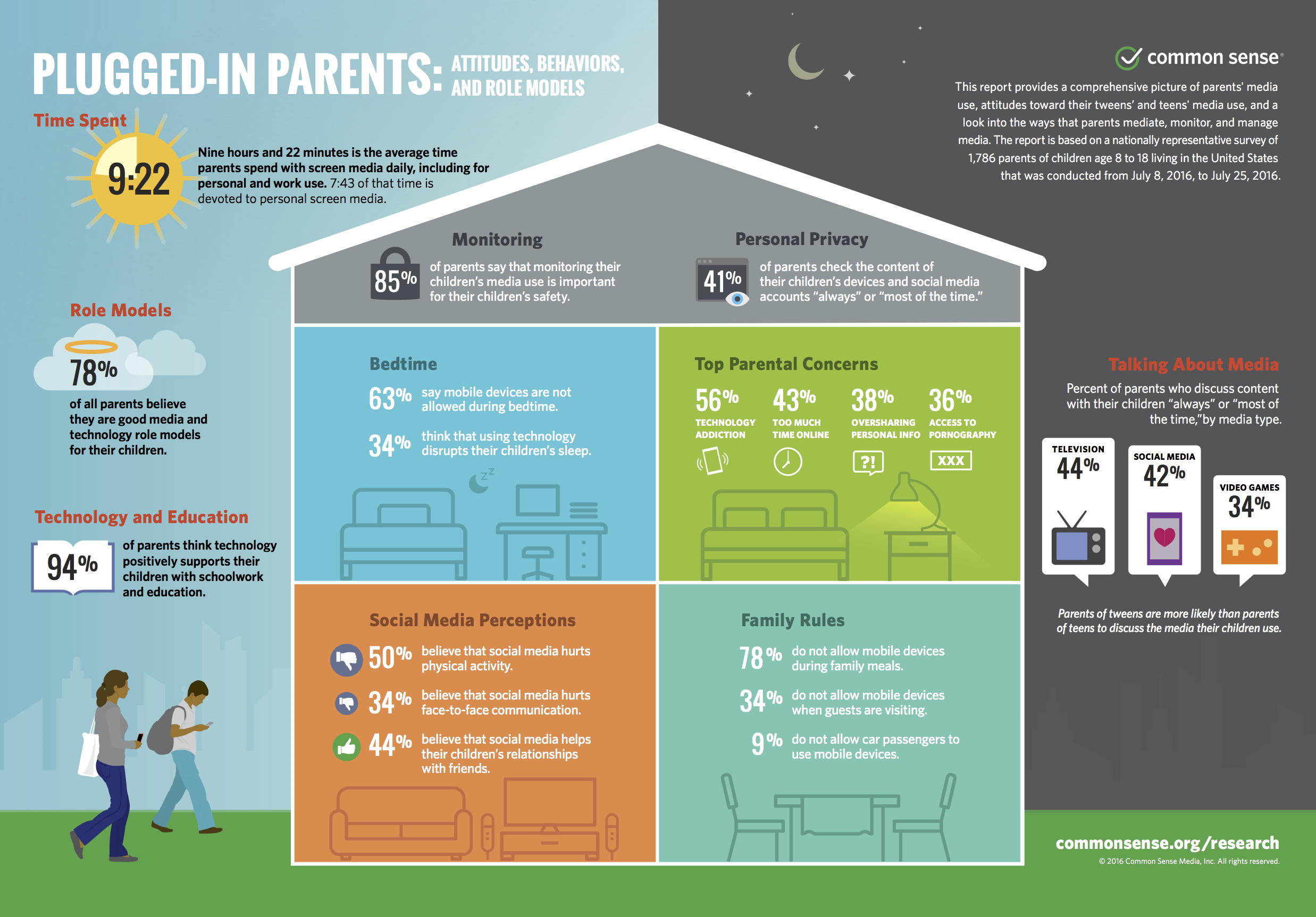Parents of school-aged children spend more than nine hours a day on media use – including TV, social media and computer-based educational programs – according to a new survey.
The survey, “The Common Sense Census: Plugged-In Parents of Tweens and Teens,” suggests that the vast majority of parents say they believe computers and digital devices in classrooms are good for their children. But they also worry that their children spend too much time on devices, to the detriment of physical activity and personal relationships.
Common Sense Media, a nonprofit organization that advocates for the informed use of quality media, surveyed more than 1,700 parents of children 8 to 18 years old to learn about their media and technology use; it also conducted focus groups. That’s what makes this survey different – it sought to measure parents’ influence and opinions on media and technology use. And it measured how much time parents are spending on it, too.
As it turns out, parents are watching TV and playing games on their phones the same amount of time as their children.
“These findings are fascinating because parents are using media for entertainment just as much as their kids are, yet they express concerns about their kids’ media use while also believing that they are good role models for their kids,” James P. Steyer, founder and CEO of Common Sense, said in a statement. “Media can add a lot of value to relationships, education, and development, and parents clearly see the benefits, but if they are concerned about too much media in their kids’ lives, it might be time to reassess their own behavior so that they can truly set the example they want for their kids.”
An overwhelming majority – nearly 95 percent – of parents said they believe that technology is useful for schoolwork, according to the survey. They believe that technology helps children learn new skills, prepares them for modern jobs, exposes them to diverse cultures and encourages creativity.
The parent’s opinions on social media were less sunny. Nearly a quarter of parents reported that they believe that social media can be useful tools in the classroom. Slightly fewer said social media hurts education. And the remaining 55 percent said they believe it makes no difference in school performance.
Technology in the classroom isn’t necessarily a bad thing or a good thing. A lot depends on what teachers are actually doing with those digital devices.
Experts have been changing their opinion about screens, even for the littlest learners, who were once encouraged not to watch any screens whatsoever. In October, the American Academy of Pediatrics updated its rules for how much time young children may safely spend with screens, such as TV and digital devices. They also stressed that the quality of the media is very important – an hour with a mindless game is not the same as an hour spent in a high-quality educational game.
For instance, Bedtime Math is an app that helps parents read to their children in a way that also gives children exposure to math concepts at a young age. It’s been recognized as an effective tool. Finding quality media and apps can be a challenge for parents. Many of the tools listed as “educational” are not. (Common Sense Media provides parents and teachers with a free, online resource, Graphite, to help vet the digital games and tools they find.)
More than three-quarters of parents surveyed said they set rules for what kind of material their children view on TVs and digital devices. And parents of students with poor grades reported the most difficulty in getting children to turn off a smartphone or tablet when asked to do so.
Notably, the survey revealed that parents believe their children are more likely to prefer face-to-face conversations to communicating entirely through digital devices. This contradicts the common perception that teenagers and pre-teens are “mobile phone-addicted individuals,” according to the survey. More than 80 percent of parents said their child does not prefer to communicate with them via text message.
It’s more evidence that the so-called digital natives might prefer blended learning methods, which mix technology and in-person interaction.
This story was produced by The Hechinger Report, a nonprofit, independent news organization focused on inequality and innovation in education. Sign up for our newsletter to get a weekly update on blended learning.

